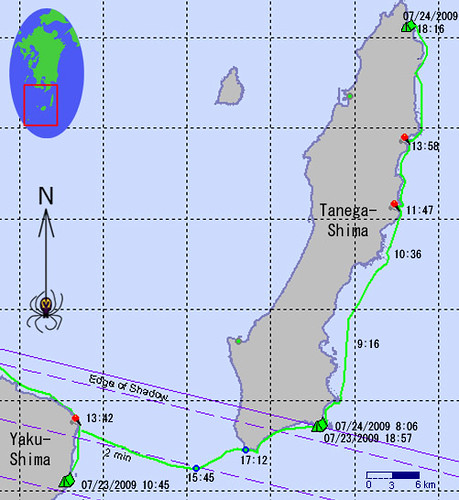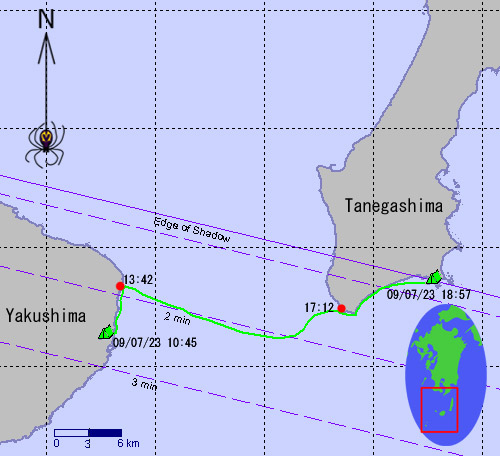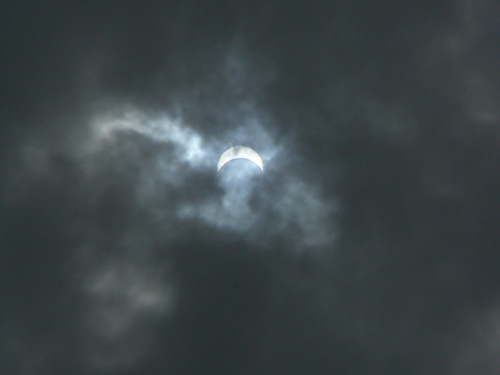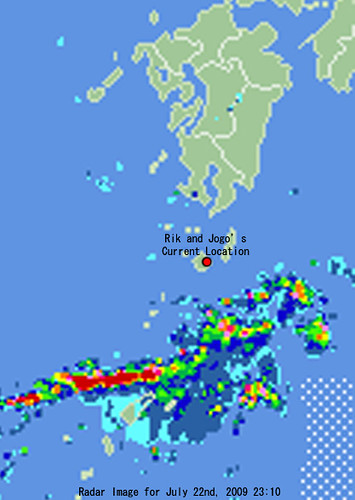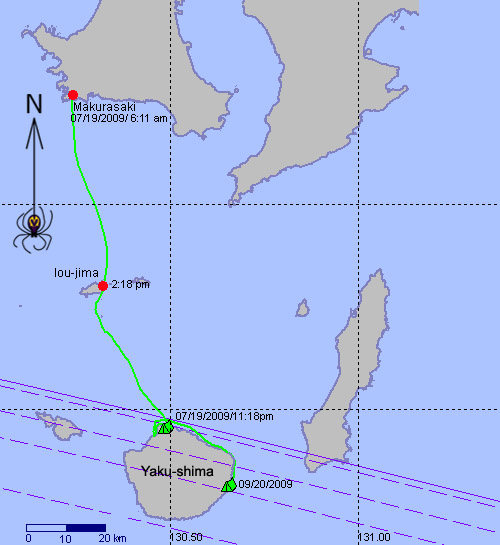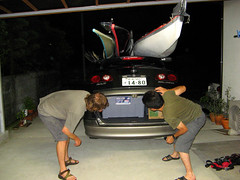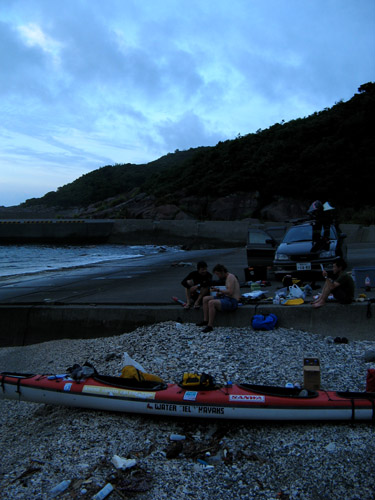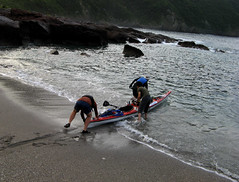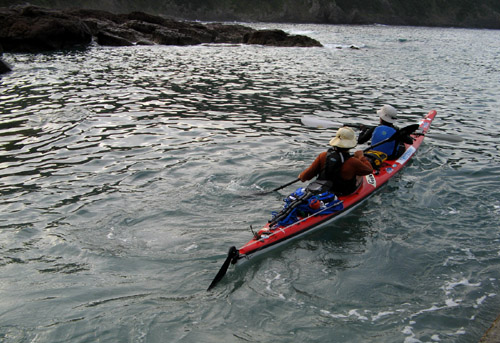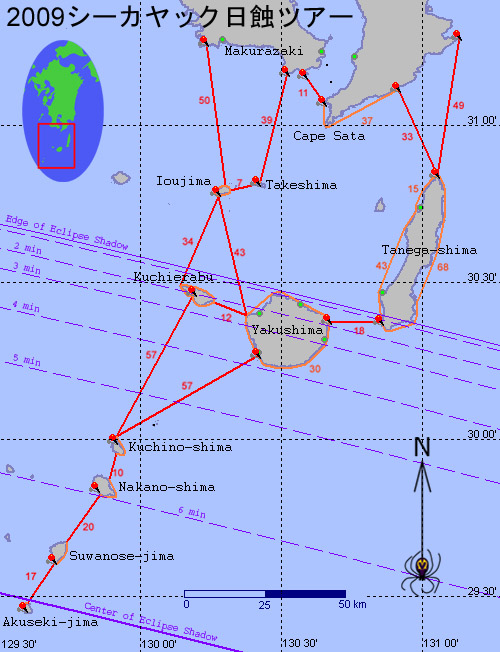Pictures from an Expedition
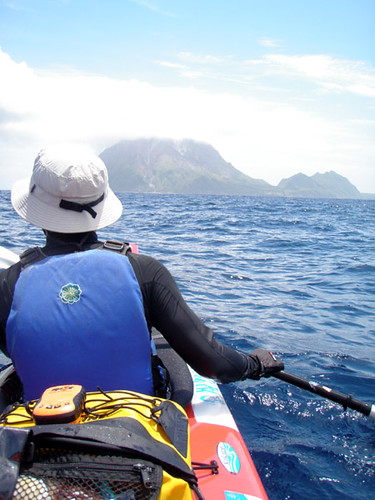
Approaching Ioujima on the first day. We planned to land briefly here before moving on a further 35km to Kuchierabu. Neither happened in the end. The sea was too rough even in the lee of the island and after, the current and wind were too strong so we set course for Yakushima instead, where we arrived after 99km and 17 hours of continuous paddling.
初日、硫黄島を近く通ったが、波のせいで上陸は難しすぎて、そのまま口永良部島に向かって漕ぎました。風と黒潮の流れをしばらく戦うと諦めて、方向を変わって屋久島の方に目指して、99キロと17時間後やっと屋久島に上陸しました。
On the second day, we attempted to go south around Yakushima's west side, but gave up the struggle after a few hours, having gained only several kilometers in that time. Turning around, we sailed using the Windpaddle's large size sail "Cruiser" at full speed to Anbo at the island's east extremity.
二日目屋久島の西側を通って、屋久島の南側に移動しようと思ったが、向かい風が強くて、諦めました。帰りはウインドパドルを使って、屋久島の東に位置している安房までハイスピードで一路順風にゴールまで進んだ。
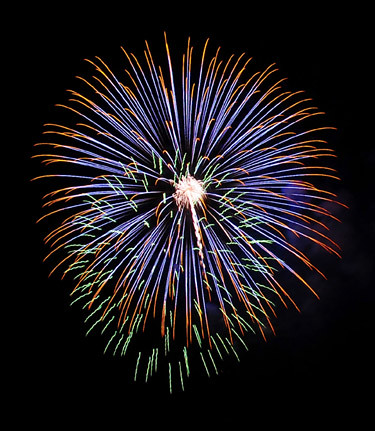
Soon after we set up camp in Anbo, fireworks exploded overhead, part of the local summer festival and eclipse anticipation party rolled into one. The display served as good practice for shooting with my new camera, under conditions somewhat similar to the eclipse itself.
安房に上陸して、キャンプの準備を住んだとたんに花火は頭上に打ち上がりました。新しいカメラを使って、日食の似ているな状況だから良い練習になると思いました。
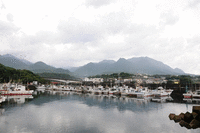
Thick clouds prevented observation of the total eclipse in Yakushima and all other nearby islands. Instead, I shot this 18-minute sequence of the moon's shadow passing over Anbo village. The darkness lasted for about 3 minutes.
皆既日食の時屋久島付近では雲はかなり厚そうで観察はできませんでしたが、月の影が安房村に覆った時18分の間この連続写真を撮りました。暗みは3分ぐらいでした。
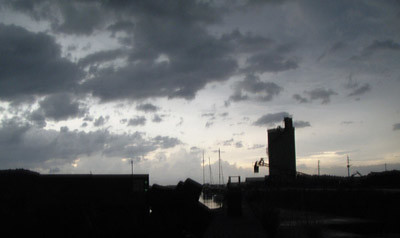
Even during deepest eclipse, light could be seen to the north since Yakushima was actually fairly close to the shadow's northern limit. Conversely, deep darkness prevailed to the south.
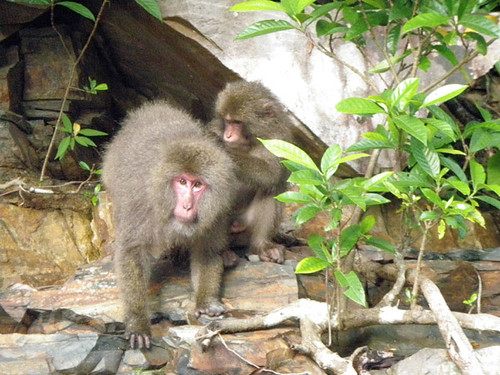
On the afternoon of the day of the eclipse, watching monkeys from the kayak on the shore of the Anbo River lightened up my mood and saved some part of the day I'd rued.
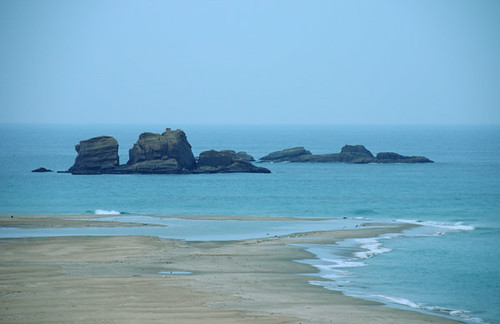
Our return trip used the long island of Tanegashima as a shield against the relentless Kuroshio current. We crossed a fast-flowing strait to Takezaki at the southern end of the island, where sandstone rocks emerge from the coastal flats, creating a unique landscape.
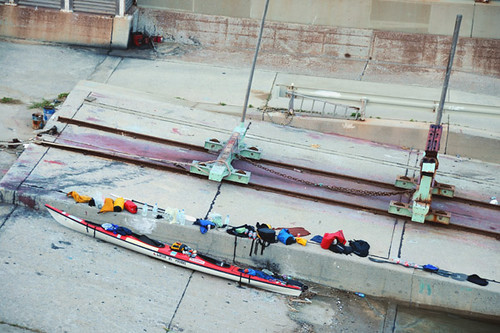
Boat ramps such as this one at Takezaki serve as convenient landing and camping points for itinerant kayakers. In Japan, the overbuilt ports are for the most part sufficiently deserted, and kayakers few and far between, so it's rare anyone even notices, nevermind complains, about us being there.
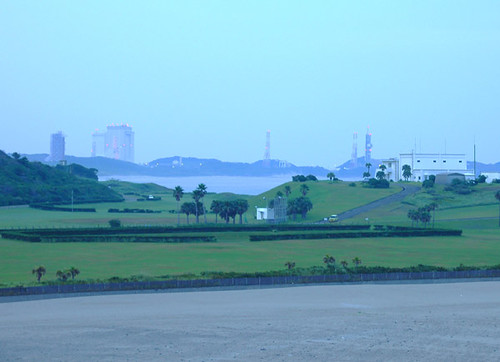
Tanegashima is best known for its space center, where most Japanese space shots take place. Although various related facilities are scattered throughout the island, the actual launch pads are located about 8km north of Takezaki. This picture of the complex was taken from a large viewing platform constructed specifically for public viewing of the launches. It might be pretty interesting to see a rocket go up into space from here.
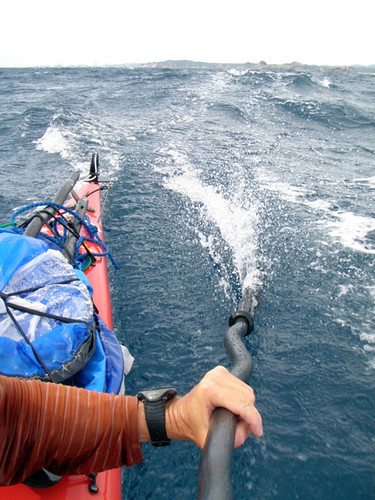
Top sailing speeds were achieved in brisk winds along the east coast of Tanegashima. In the stronger gusts, the GPS read over 20km/h. (In comparison, the usual paddling speed for our tandem was about 7km/h.) A burly stern rudder with the paddle was needed to take the weight off the boat's built-in rudder, which is not really built for such abuse.
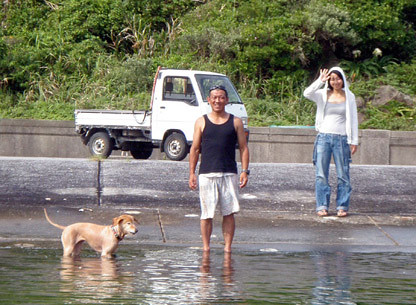
Having reached the north tip of Tanegashima in a day, we met with Jogo's friend Bun-san, a local surfer and kayaker. Chatting while staying over at his house made me want to spend more time with this interesting character who, among other things, has spent time hanging out with Canadian and American Indians. Here, Bun-san with his wife Kayo and dog Natsuki, give us a send-off as we depart Tanegashima to cross the 50-km-wide Osumi Strait.

Bun-san has just completed a dugout canoe, made painstakingly by hand from a local tree that he also felled by himself. He is seen here with a friend during the first test-run of the craft at the local harbor, on the very same day we arrived.
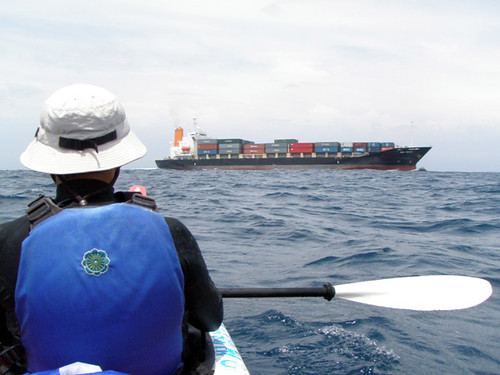
Jogo and I pause for a few minutes in the middle of the Osumi Strait to let a Panamanian container ship pass. The giant ship, probably coming from China, had already set course for the famous canal on the other side of the Pacific. In another chance meeting an hour later, a Japan Coast Guard cutter passed within 300 meters of us without taking notice, proving again how inconspicuous a sea kayak can be on the sea, especially when half-hidden by choppy waves as we were.

The tiny town of Uchinoura in Shibushi Bay on the southeast coast of Kyushu was our final destination. Crossing here from Tanegashima is not the shortest route to the mainland, but because of the vigorous currents within the strait, it is perhaps the fastest. In any case, we made good time, covering 50km of open sea in 8 hours.
Labels: kayak expedition シーカヤック遠征



